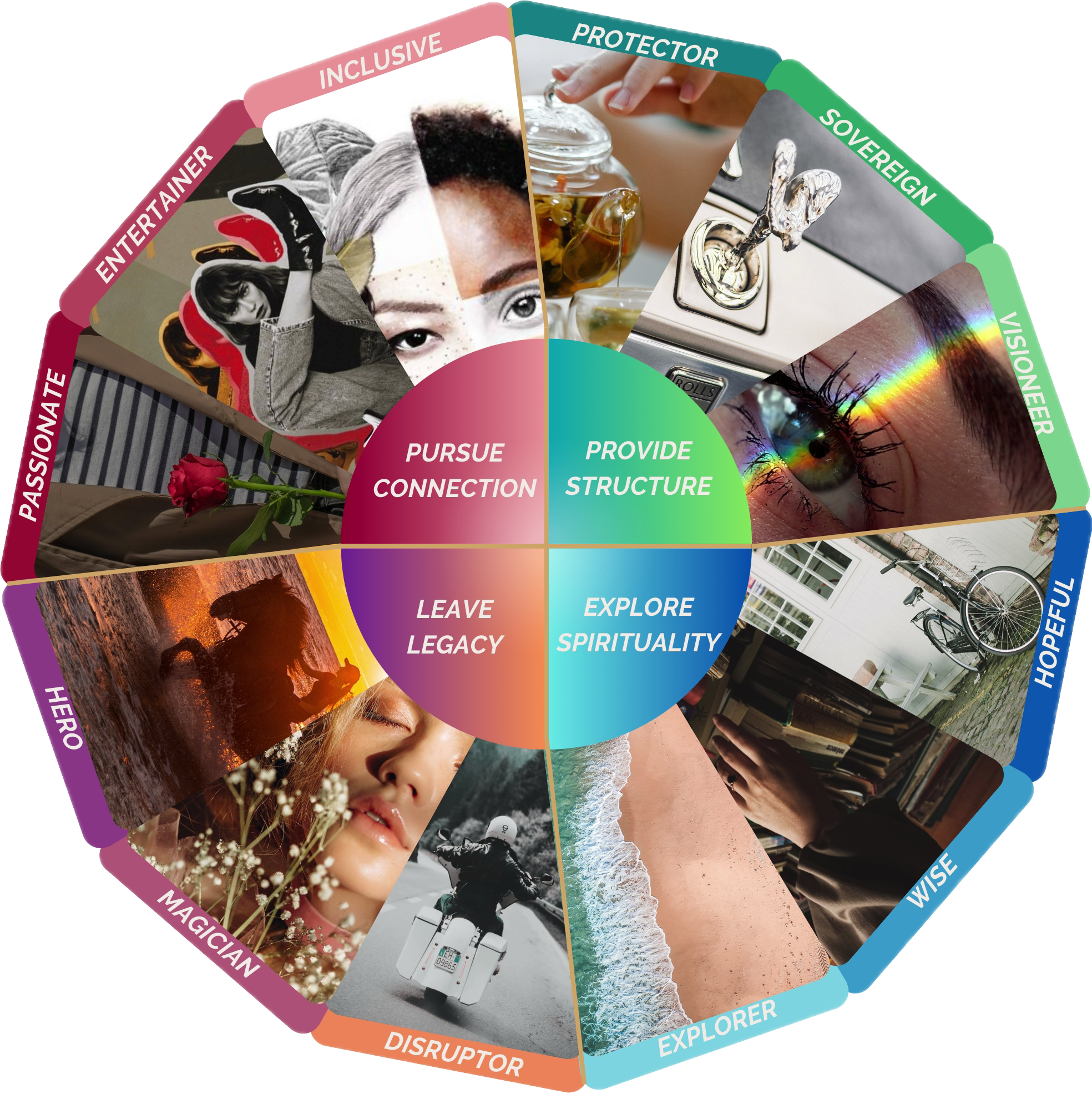Brand Archetypes: Unlocking the Influence of Symbolic Power
Hello, gorgeous!
Imagine walking into a room filled with strangers, yet instantly feeling a magnetic pull towards someone you’ve never met before. It’s as if there’s an unspoken connection, a spark, a familiarity that defies logic. Certainly, we’ve all experienced this inexplicable bond, not only with people but also with objects and brands. It’s a feeling of identification, of belonging, and it stems from the power of brand archetypes – timeless symbols that resonate deep within our collective unconscious.
In the ever-evolving world of branding, capturing the hearts and minds of consumers is a perpetual quest. As a result, marketers and brand strategists seek to harness the magic that lies within archetypes, those ancient symbols that hold sway over our deepest emotions and aspirations. So, in this article, I will provide you with an overview of brand archetypes, exploring their significance and unveiling the 12 archetypes that shape the world of archetypal branding.
Are you ready to unlock the influence of this symbolic power, where dreams merge with reality, and connections are forged that defy the bounds of time and space?
What are Archetypes?
Archetypes are derived from the Greek words “arche,” meaning “original” or “first,” and “typos,” meaning “pattern” or “model.” They are ancient, universal symbols that tap into our shared human experiences, transcending the boundaries of time and culture. Moreover, archetypes have deep roots in our collective consciousness, woven into the fabric of human existence.
These archetypal symbols have been present throughout human history, embedded in myths, folklore, and cultural narratives. Furthermore, they represent fundamental aspects of the human psyche and serve as blueprints for our thoughts, behaviors, and aspirations.
Just as a hug from a loved one brings solace, or the comforting embrace of a childhood blanket sparks a feeling of security, archetypes not only have the extraordinary ability to evoke a sense of warmth, familiarity, and trust. They also speak to our collective unconscious, stirring memories and emotions in a way that resonates universally.
In other words, archetypes are symbols that awaken emotions in the collective unconscious.
As we explore the realm of brand archetypes, we must remember that these symbols carry the weight of history, culture, and shared experiences. Therefore, embracing the power of archetypes in branding allows us to tap into the deep wellspring of human connection and create lasting relationships with consumers at a deep level.
Brand Archetypes and their Origins
The groundwork for brand archetypes was laid by the renowned Swiss psychiatrist Carl Jung. Through his study of human behaviour, Jung discovered that we carry a collective unconscious, a reservoir of shared knowledge and impressions inherited from our ancestors.
Later, building upon Jung’s theories, Margaret Mark, a marketing expert, and Carol S. Pearson, a psychologist, recognized the significance of these archetypal patterns in shaping human development and evolution.
The Birth of the 12 Brand Archetypes
Margaret Mark and Carol S. Pearson embarked on a collaborative journey, fusing the realms of marketing and psychology to create the wheel of 12 brand archetypes. Drawing from Jung’s work, they identified 12 archetypes that encapsulate the most essential patterns of human behavior.
As a result, these archetypes form the foundation of archetypal branding, a powerful approach that allows brands to align with these primal symbols and connect with consumers on a deeper level.
Here are the 12 brand archetypes:

- The Hopeful: Pure, optimistic, and sincere. Motto: “Free to be you and me.”
- The Explorer: Adventurous, pioneering, and restless. Motto: “Don’t fence me in.”
- The Wise: Wise, knowledgeable, and introspective. Motto: “The true will set you free.”
- The Hero: Courageous, determined, and resilient. Motto: “Where there’s a will, there’s a way.”
- The Disruptor: Rebellious, disruptive, and unconventional. Motto: “Rules are meant to be broken.”
- The Magician: Visionary, transformative, and charismatic. Motto: “It can happen.”
- The Passionate: Passionate, sensual, and intimate. Motto: “I only have eyes for you.”
- The Entertainer: Playful, spontaneous, and humorous. Motto: “If I can’t dance, I don’t want to be part of your revolution.”
- The Inclusive: Relatable, down-to-earth, and inclusive. Motto: “You’re just like me and I’m just like you.”
- The Protector: Nurturing, compassionate, and selfless. Motto: “Love your neighbour as yourself.”
- The Sovereign: Authoritative, influential, and commanding. Motto: “Power isn’t everything it’s the only thing.”
- The Visioneer: Imaginative, innovative, and expressive. Motto: “If it can be imagined, it can be created.”
Fascinating, isn’t it?
Understanding the power of brand archetypes allows marketers and brand strategists to tap into the universal language of symbolism. By aligning with specific archetypes, brands can create emotional connections, foster loyalty, and resonate deeply with their target audience. The 12 brand archetypes provide a roadmap for crafting authentic brand stories that evoke timeless human desires and aspirations. So, embark on your brand’s archetypal journey and unleash the transformative power of symbols to captivate and inspire the world.
Want to dig even deeper into each of the 12 brand archetypes? Then check out my Ultimate Guide to the 12 Brand Archetypes
See you soon,
Mil.

